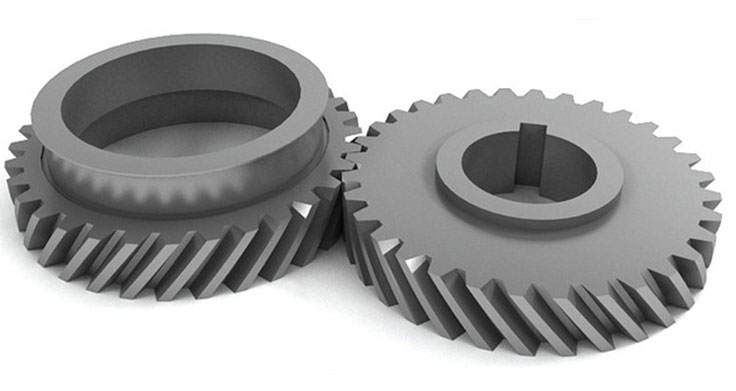
Helical gears play a crucial role in automotive transmissions, propelling efficiency forward in modern vehicles. As automotive engineering advances, helical gears continue to contribute significantly to improving the overall performance and fuel efficiency of automobiles. Here’s how they drive efficiency forward in automotive transmissions:
1. Smoother Gear Shifts:
Helical gears’ gradual tooth engagement enables smoother gear shifts, reducing the shock and vibration during gear changes. This smooth transition between gears enhances driving comfort and extends the lifespan of transmission components.
2. Noise Reduction:
Helical gears operate more quietly than other gear types, such as spur gears. The helical tooth profile and smoother meshing action significantly reduce gear noise, providing a quieter and more refined driving experience.
3. Energy Efficiency:
The efficient power transmission of helical gears results in less energy loss and reduced friction during gear engagement. As a result, automotive transmissions equipped with helical gears contribute to improved fuel efficiency and reduced greenhouse gas emissions.
4. Compact Design:
Helical gears can achieve high gear ratios with fewer teeth, leading to a more compact transmission design. This compactness reduces the overall weight of the transmission, contributing to improved fuel economy and better vehicle handling.
5. High Load Capacity:
Helical gears’ ability to distribute the load across multiple teeth allows them to handle higher torque loads, making them suitable for transmitting power from the engine to the wheels in various driving conditions.
6. Improved Power Delivery:
The continuous engagement of helical gears ensures a smooth and constant power delivery from the engine to the wheels. This results in better acceleration, responsiveness, and overall performance of the vehicle.
7. Durability and Reliability:
Helical gears are known for their durability and reliability in high-stress environments. In automotive applications, where transmissions are subject to constant use and varying driving conditions, helical gears provide long-lasting performance with minimal maintenance requirements.
8. Versatility in Transmission Types:
Helical gears are compatible with various transmission types, including manual, automatic, and continuously variable transmissions (CVTs). Their adaptability allows automotive manufacturers to tailor transmissions to specific vehicle models and driving preferences.
9. Precision and Control:
The reduced backlash and smooth meshing of helical gears contribute to precise motion control. This precision is essential for maintaining the desired gear ratios, optimizing power delivery, and enhancing vehicle drivability.
10. Advancements in Hybrid and Electric Vehicles:
Helical gears play a significant role in the transmission systems of hybrid and electric vehicles. Their efficiency and reliability are crucial for optimizing the power transfer between the internal combustion engine, electric motor, and wheels.
Helical gears have become indispensable components in automotive transmissions, contributing to smoother gear shifts, reduced noise, improved fuel efficiency, and enhanced vehicle performance. As automotive technology continues to evolve, helical gears will remain at the forefront, driving efficiency forward and shaping the future of automotive engineering.
